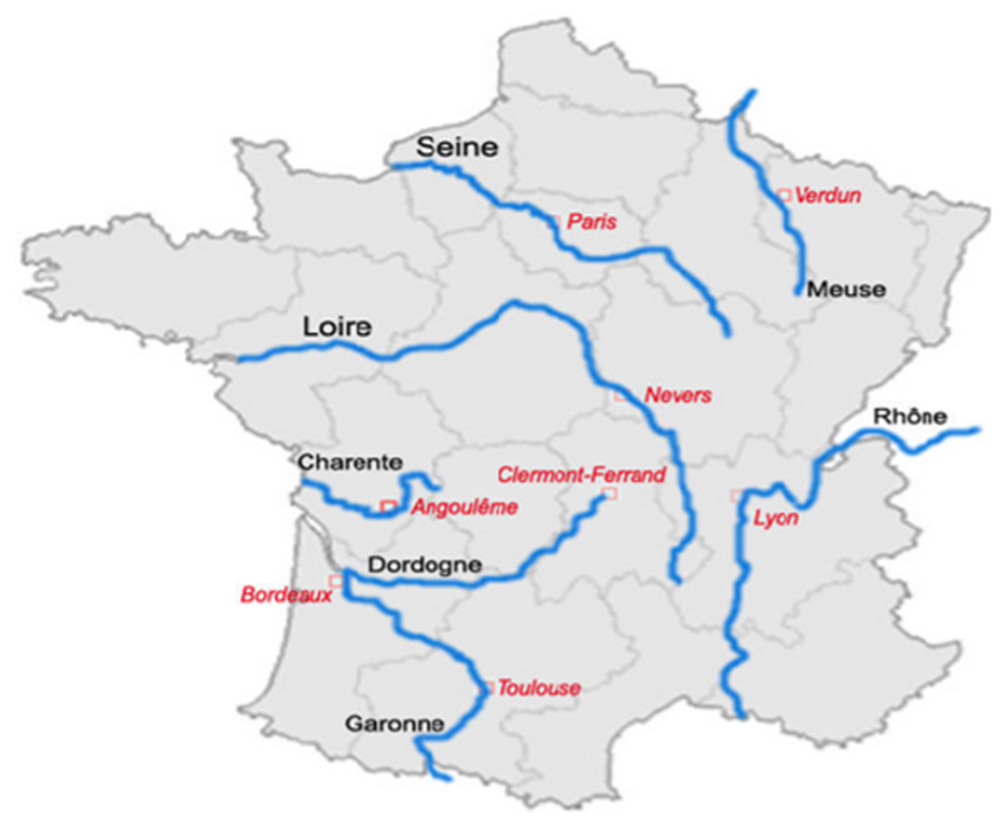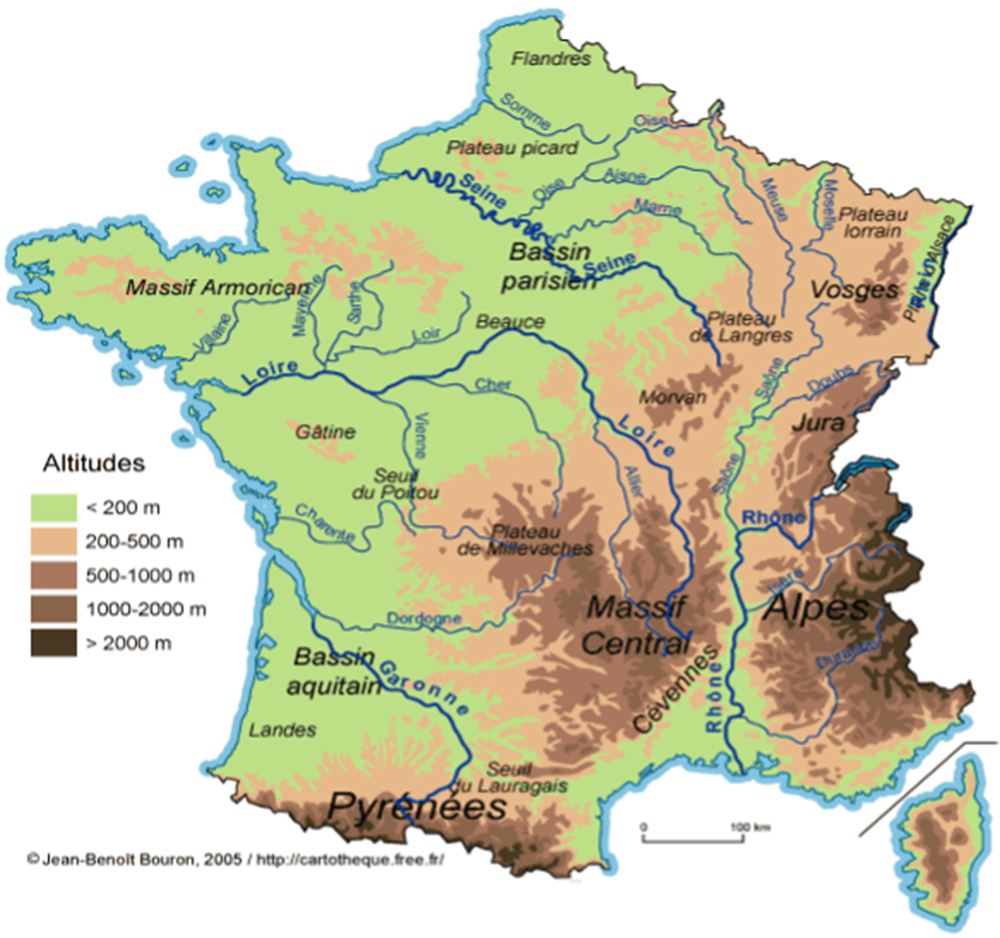
The Loire is the longest river in France with 1,012 kilometers. The Loire rises at Mont Gerbier-de-Joncs in the Ardèche, in the Massif Central, to finish its course in the Atlantic Ocean, via the estuary of Saint-Nazaire and therefore crosses the cities of Roanne, Nevers, Orleans, Tours, Blois, Saumur and Nantes.
The Seine is 776 kilometres long. It is the second largest river in France. It rises on the Langres plateau in Côte d’Or to finish its race in the English Channel at the city of Le Havre. It crosses the cities of Troyes, Melun, Paris, Rouen and Le Havre.
The Rhône measures 812 kilometers, including 546 kilometers in France. It has its source in the Rhône glacier, Canton of Valais in Switzerland, flows into Lake Geneva and then resumes its course to finish it in the department of Bouches du Rhône and the Mediterranean Sea in Marseille. It crosses the cities of Sion (Switzerland), Geneva (Switzerland), Lyon, Valence, Avignon, Arles and Marseille.
The Garonne flows for 647 kilometres, including 523 kilometres in France. It rises in Pla de Beret, at 1860 meters above sea level, in the Val d’Aran in Spain and flows into the Atlantic via the Gironde. It passes through Toulouse, Agen and Bordeaux.
The Meuse is 950 kilometres long but covers only 486 kilometres in France. It finishes its race in the North Sea.
The Dordogne flows for 483 kilometers long. It ends its race in the Gironde estuary.
The Charente is 381 kilometres long. It has its source in Chéronnac in Haute-Vienne at 295 meters above sea level, and flows into the Atlantic near the city of Port-des-Barques. It crosses the cities of Rochefort, Saintes, Cognac, Angoulême.

The relief of the France is organized in two clearly distinct parts: the France of the North and West is that of the plains and lowlands, wide valleys (Seine, Loire, Garonne) and easy communications. Most of this part of the territory is occupied by two sedimentary basins, the Paris Basin and the Aquitaine Basin. The Armorican Massif is an ancient massif: contrary to what its name suggests, it is not a real mountain: its average altitude is lower than that of the Paris Basin.
The other France is mountains and narrow valleys. The Jura, the Alps and the Pyrenees are young, high mountains, with brutal forms, which rely on ancient massifs (Massif Central, Morvan, Vosges) rejuvenated by this contact. Between these mountains, the valleys are all the more important: valleys of the Saône and Rhône, Limagne, plains of collapse of Languedoc or Alsace.
